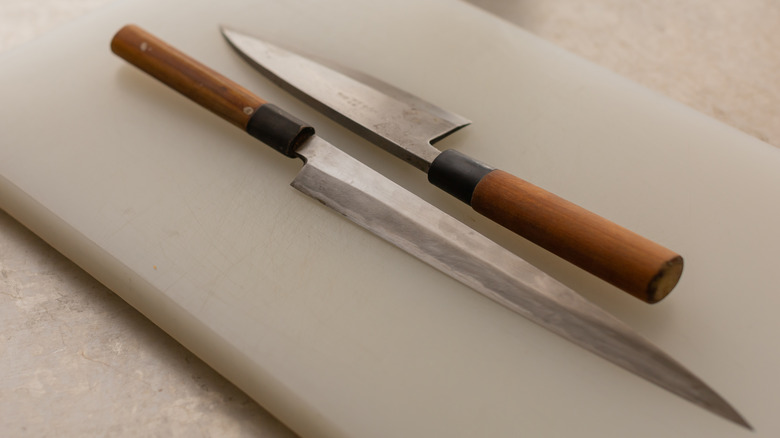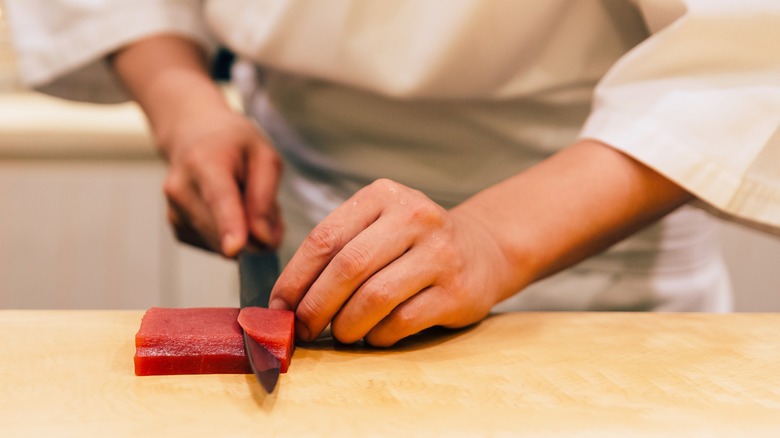What Makes Yanagiba Knives Unique
Knives are arguably the most important tool in your kitchen. Yes you may know your oven really well and yes you may know how to play your microwave like a fiddle, but knives are literally cradled in the palm of your hand. When utilized by the right cook, knives can create some of the most beautiful pieces of art you've ever tasted.
The Japanese yanagiba knives are one such specialized tool that can create impressive dishes. According to Japanese Chef's Knife, very roughly translated, yanagiba means "willow-leaf blade" which is an elegant reflection of their shape and overall design. These knives are used primarily to slice boneless filets of raw fish, although they are also effective at filleting small to medium sized fish and skinning fish, making them perfect for sushi. These gorgeously long looking knives come in a variety of lengths to cater to the chef's preferences and to tailor to specific fish.
Perfectly designed to cut
Yanagiba knives are unique not only for their size and shape, but also for their single-bevel blade, per Knife Wear. This means that only one side of the knife edge is sharpened, which results in a blade that is not straight but concave. Yanagiba knife blade edges are drastically curved and skew significantly to one side.
Now typically for chef knives, santoku knives, and paring knives — an even edge is what you want. But when filleting fish (specifically when filleting fish for sushi) the yanagiba's curved edge is more advantageous. The angle of the knife edge and the concavity of the blade means less contact between the fish and the knife, which preserves as much of the texture and cell structure of the fish as possible. The concavity also gives an easy release from the knife after the cut has been made. For cuisine as visually and flavorfully delicate as sushi, specialized tools are a necessity to avoid mangling your sashimi. It can be the difference between toro or negitoro.

